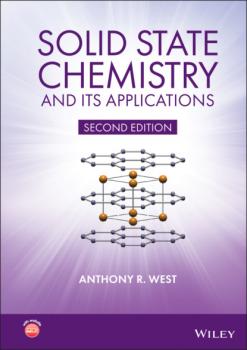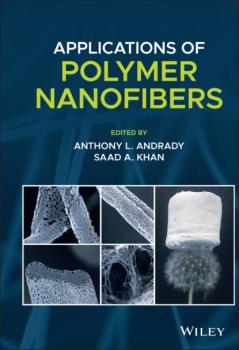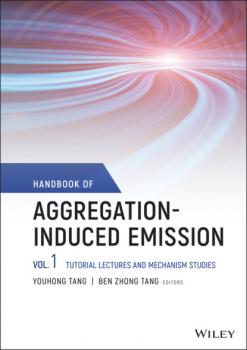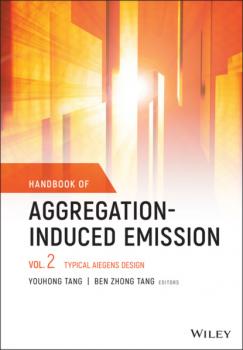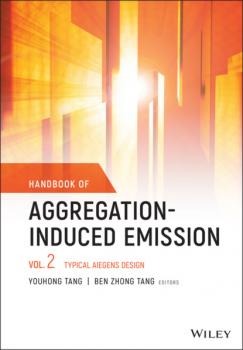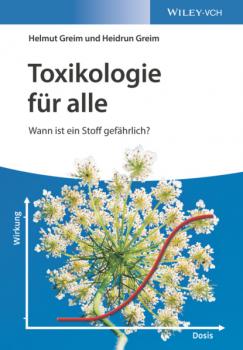Химия
Различные книги в жанре ХимияHandbook of Aggregation-Induced Emission, Volume 3
The third volume of the ultimate reference on the science and applications of aggregation-induced emission The Handbook of Aggregation-Induced Emission explores foundational and advanced topics in aggregation-induced emission, as well as cutting-edge developments in the field, celebrating twenty years of progress and achievement in this important and interdisciplinary field. The three volumes combine to offer readers a comprehensive and insightful interpretation accessible to both new and experienced researchers working on aggregation-induced emission. In Volume 3: Emerging Applications, the editors address the applications of AIEgens in several fields, including bio-imaging, fluorescent molecular switches, electrochromic materials, regenerative medicine, detection of organic volatile contaminants, hydrogels, and organogels. Topics covered include: AIE-active emitters and their applications in OLEDs, and circularly polarized luminescence of aggregation-induced emission materials AIE polymer films for optical sensing and energy harvesting, aggregation-induced electrochemiluminescence, and mechanoluminescence materials with aggregation-induced emission Dynamic super-resolution fluorescence imaging based on photoswitchable fluorescent spiropyran Visualization of polymer microstructures Self-assembly of micelle and vesicles New strategies for biosensing and cell imaging Perfect for academic researchers working on aggregation-induced emission, this set of volumes is also ideal for professionals and students in the fields of photophysics, photochemistry, materials science, optoelectronic materials, synthetic organic chemistry, macromolecular chemistry, polymer science, and biological sciences.
Solid State Chemistry and its Applications
SOLID STATE CHEMISTRY AND ITS APPLICATIONS A comprehensive treatment of solid state chemistry complete with supplementary material and full colour illustrations from a leading expert in the field. Solid State Chemistry and its Applications, Second Edition delivers an advanced version of West’s classic text in solid state chemistry, expanding on the undergraduate Student Edition to present a comprehensive treatment of solid state chemistry suitable for advanced students and researchers. The book provides the reader with an up-to-date account of essential topics in solid state chemistry and recent developments in this rapidly developing field of inorganic chemistry. Significant updates and new content in this second edition include: A more extensive overview of important families of inorganic solids including spinels, perovskites, pyrochlores, garnets, Ruddlesden-Popper phases and many more New methods to synthesise inorganic solids, including sol-gel methods, combustion synthesis, atomic layer deposition, spray pyrolysis and microwave techniques Advances in electron microscopy, X-ray and electron spectroscopies New developments in electrical properties of materials, including high Tc superconductivity, lithium batteries, solid oxide fuel cells and smart windows Recent developments in optical properties, including fibre optics, solar cells and transparent conducting oxides Advances in magnetic properties including magnetoresistance and multiferroic materials Homogeneous and heterogeneous ceramics, characterization using impedance spectroscopy Thermoelectric materials, MXenes, low dimensional structures, memristors and many other functional materials Expanded coverage of glass, including metallic and fluoride glasses, cement and concrete, geopolymers, refractories and structural ceramics Overview of binary oxides of all the elements, their structures, properties and applications Featuring full color illustrations throughout, readers will also benefit from online supplementary materials including access to CrystalMaker® software and over 100 interactive crystal structure models. Perfect for advanced students seeking a detailed treatment of solid state chemistry, this new edition of Solid State Chemistry and its Applications will also earn a place as a desk reference in the libraries of experienced researchers in chemistry, crystallography, physics, and materials science.
Handbook of Aggregation-Induced Emission, Volume 1
The first volume of the ultimate reference on the science and applications of aggregation-induced emission The Handbook of Aggregation-Induced Emission explores foundational and advanced topics in aggregation-induced emission, as well as cutting-edge developments in the field, celebrating twenty years of progress and achievement in this important and interdisciplinary field. The three volumes combine to offer readers a comprehensive and insightful interpretation accessible to both new and experienced researchers working on aggregation-induced emission. In this first volume of three, the editors survey the subject of aggregation-induced emission with a focus on the fundamentals of various branches of the discipline, such as crystallization-induced emission, room temperature phosphorescence, aggregation-induced delayed fluorescence, and more. This book covers the new properties of materials endowed by molecular aggregates. It also includes: A thorough introduction to the mechanistic understanding of the importance of molecular motion to aggregation-induced emission An exploration of the aggregation-induced emission mechanism at the molecular level Practical discussions of aggregation-induced emission from the restriction of double bond rotation at the excited state, and clusterization-triggered emission Perfect for academic researchers working on aggregation-induced emission, this set of volumes is also ideal for professionals and students in the fields of photophysics, photochemistry, materials science, optoelectronic materials, synthetic organic chemistry, macromolecular chemistry, polymer science, and biological sciences.
Handbook of Aggregation-Induced Emission, Volume 2
The second volume of the ultimate reference on the science and applications of aggregation-induced emission The Handbook of Aggregation-Induced Emission explores foundational and advanced topics in aggregation-induced emission, as well as cutting-edge developments in the field, celebrating twenty years of progress and achievement in this important and interdisciplinary field. The three volumes combine to offer readers a comprehensive and insightful interpretation accessible to both new and experienced researchers working on aggregation-induced emission. In Volume 2: Typical AIEgens Design , the editors address the design and synthesis of typical AIEgens that have made significant contributions to aggregation-induced emission research. Recent advances in the development of aggregation-induced emission systems are discussed and the book covers novel aggregation-induced emission systems in small molecule organogels, polymersomes, metal-organic coordination complexes and metal nanoclusters. Readers will also discover: A thorough introduction to the synthesis and applications of tetraphenylpyrazine-based AIEgens, AIEgens based on 9,10-distyrylanthracene , and the Salicylaldehyde Schiff base Practical discussions of aggregation-induced emission from the sixth main group and fluorescence detection of dynamic aggregation processes using AIEgens Coverage of cyclic triimidazole derivatives and the synthesis of multi-phenyl-substituted pyrrole based materials and their applications Perfect for academic researchers working on aggregation-induced emission, this set of volumes is also ideal for professionals and students in the fields of photophysics, photochemistry, materials science, optoelectronic materials, synthetic organic chemistry, macromolecular chemistry, polymer science, and biological sciences.
Toxikologie für alle
Was man über Giftstoffe, deren Wirkung und Bewertung wissen muss: Zwei erfahrene Toxikologen erklären allgemeinverständlich, wann ein Stoff zum Schadstoff wird.<br> Der Schwerpunkt liegt dabei auf den allgemeinen Grundlagen einer toxikologischen Untersuchung und Bewertung von Schadstoffen, sowie den daraus abgleiteten Handlungsempfehlungen. Anhand bekannter Beispiele aus den letzten Jahren, u. a. des Unkrautvernichters Glyphosat oder des Insektizids Fipronil, die beide in Nahrungsmitteln nachgewiesen wurden, wird erläutert, wie konkrete Gesundheitsgefährdungen anhand toxikologischer Daten und Verfahren ermittelt und welche Maßnahmen zum Schutz der Gesundheit daraus abgeleitet werden. Die Anwendung der toxikologischen Verfahren für die Bewertung von Gesundheitsrisiken wird anhand von Beispielen aus dem Alltag anschaulich dargestellt, von Lebensmitteln über Kosmetika bis hin zu Arzneimitteln und Alltagsprodukten.<br> Ein kompakter, aber fundierter Einstieg in ein wichtiges und oft kontrovers diskutiertes Thema – für alle, die Toxine und deren Wirkungen auf Mensch und Umwelt verstehen wollen.<br>


